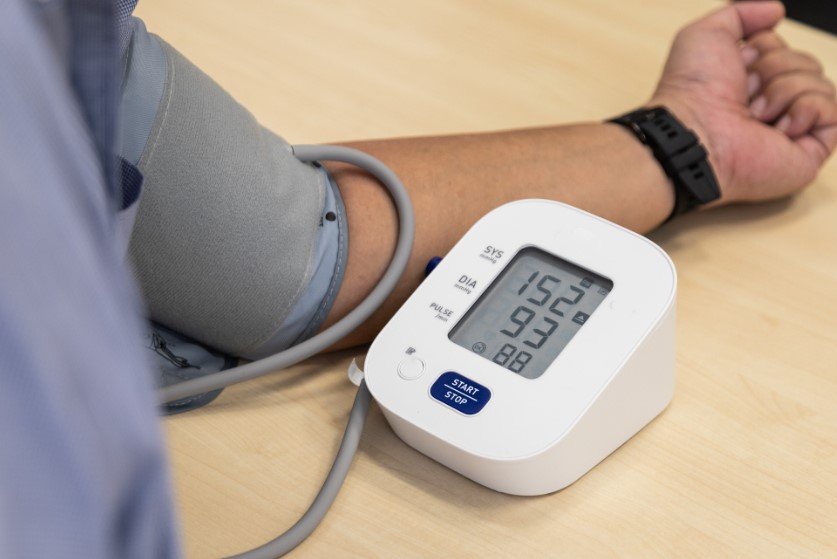More than a third of Georgia adults live with high blood pressure, a silent condition that often leads to deadly consequences if left untreated. Now, new guidelines from the American Heart Association and the American College of Cardiology are reshaping how people across the state — and the nation — think about managing it.
Georgia’s High Numbers Draw Concern
Georgia already carries a heavy burden. According to America’s Health Rankings, over 33% of adults in the state have been told they have high blood pressure. That number is not just a statistic — it’s families, coworkers, and neighbors who are facing a daily risk of heart attacks, strokes, kidney failure, or even blindness.
Doctors say many of these conditions build quietly over time. One missed appointment, one unchecked reading, can spiral into something far worse. And for Georgia, where access to regular healthcare isn’t always guaranteed, the guidelines are being treated as more than just a set of suggestions. They’re a lifeline.
It’s also the first major update since 2017. That gap matters because in eight years, lifestyles, diets, and stress levels have shifted dramatically.
What Counts as High Blood Pressure Now?
For years, the magic number people heard was 120/80. That hasn’t changed, but the way doctors talk about “pre-hypertension” and “risk” has. Medicare now advises keeping your pressure below 120/80. Anything between that and 139/89 puts you in a risky zone. At 140/90 or above, you’re officially in high blood pressure territory.
One doctor in Atlanta put it bluntly: “If you’re in that 130 range and think you’re safe, you’re really not.”
That shift means many Georgians who thought they were fine might suddenly find themselves reclassified. It’s a jarring realization, but also one that could encourage earlier action.

Lifestyle Fixes Take Center Stage
The guidelines are practical. They don’t just throw numbers at you; they give people everyday tools. They stress four core areas:
-
Limit alcohol intake
-
Cut down on sodium
-
Follow a heart-healthy diet
-
Keep up with exercise
Each sounds simple on paper. In real life, they’re tough habits to form. Georgia’s food culture — from fried chicken to sweet tea — often clashes with medical advice. But small steps, experts say, make big differences. Even losing 5% of body weight can lower risk substantially.
Alcohol: A Tough Conversation in the South
Drinking is woven into social life across Georgia, from Friday night football games to Savannah’s St. Patrick’s Day celebrations. The guidelines say the safest choice is no alcohol at all. But they also recognize reality.
Men are urged to stick to no more than two drinks a day. Women, just one. Go beyond that, and the risk of high blood pressure climbs sharply.
This is perhaps the hardest sell. As one Macon resident put it, “Telling folks down here to stop drinking? Good luck with that.” Still, framing it as moderation instead of abstinence may help the message land.
Salt on the Table, and Everywhere Else
Salt is a hidden villain. The guidelines recommend fewer than 2,300 milligrams a day, with a target of 1,500 mg or less for those already struggling. But most adults blow past that without realizing it.
That’s because sodium isn’t just in the shaker. It’s packed into restaurant meals, canned soups, sauces, even breads. In Georgia, where fast food chains and takeout dominate for many families, that adds up quickly.
Here’s how it stacks up:
| Source of Sodium | Average Contribution |
|---|---|
| Packaged & processed foods | 70% |
| Naturally occurring in foods | 15% |
| Added during cooking or at the table | 15% |
That table explains why telling people to simply “use less salt” often falls flat. The real issue is in packaged and restaurant food.
The DASH Diet Makes a Return
The DASH eating plan isn’t new, but it’s the backbone of these new recommendations. It prioritizes vegetables, fruits, whole grains, legumes, nuts, and seeds. Low-fat dairy, lean meats, poultry, and fish are encouraged. Tropical oils and high-fat dairy are discouraged.
Doctors in Georgia say adoption is slow. Southern cuisine leans heavy, often fried, and culturally comforting. But community groups are trying to adapt recipes — swapping fried catfish for grilled, sweetened drinks for flavored waters.
It’s a cultural tug-of-war between heritage and health.
Exercise: Small Steps Count
The guidelines suggest 75–150 minutes of activity per week. That’s roughly 15–30 minutes a day, five times a week. Not exactly a marathon.
Aerobic workouts, resistance training, even yoga all count. Stress management plays a role here too, since anxiety and high blood pressure often go hand-in-hand.
Doctors are telling patients not to obsess over gyms or equipment. A brisk walk around the block, climbing stairs, or gardening can all chip away at the numbers.
One cardiologist in Augusta noted, “Movement is movement. We just need people moving.”
Monitoring at Home
The guidelines push strongly for at-home blood pressure monitoring. The idea is to catch spikes before they become emergencies. Devices are relatively cheap, and pharmacies across Georgia have seen a jump in sales.
For rural areas where doctor visits require long drives, home monitoring could be the difference between catching hypertension early or facing a stroke.
The update also stresses risk assessments. Conditions like diabetes, obesity, and kidney disease compound hypertension risk. Doctors are encouraged to treat these holistically rather than in isolation.
A Wake-Up Call for Georgia
The numbers don’t lie. High blood pressure has already taken root across the state, and these new guidelines shine a spotlight on prevention. Whether Georgians adapt, however, depends on cultural shifts, access to care, and personal choices.
Change is hard. But with clearer benchmarks and more realistic steps, health officials hope this isn’t just another report filed away. It’s a roadmap to healthier lives.
